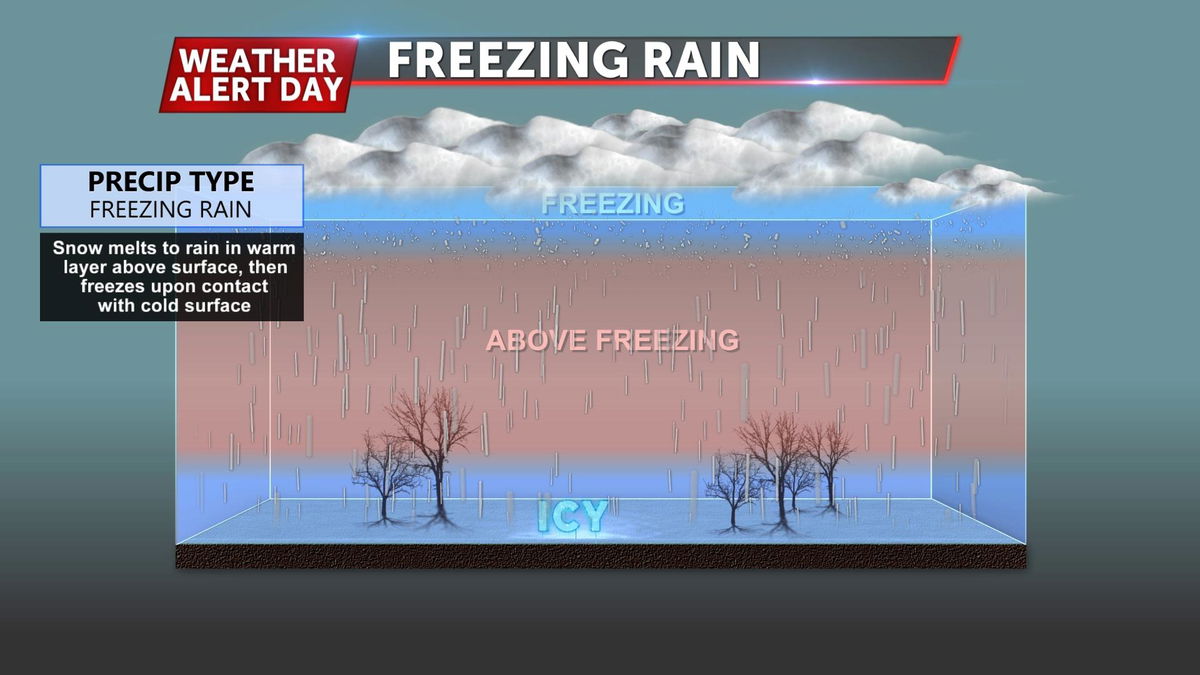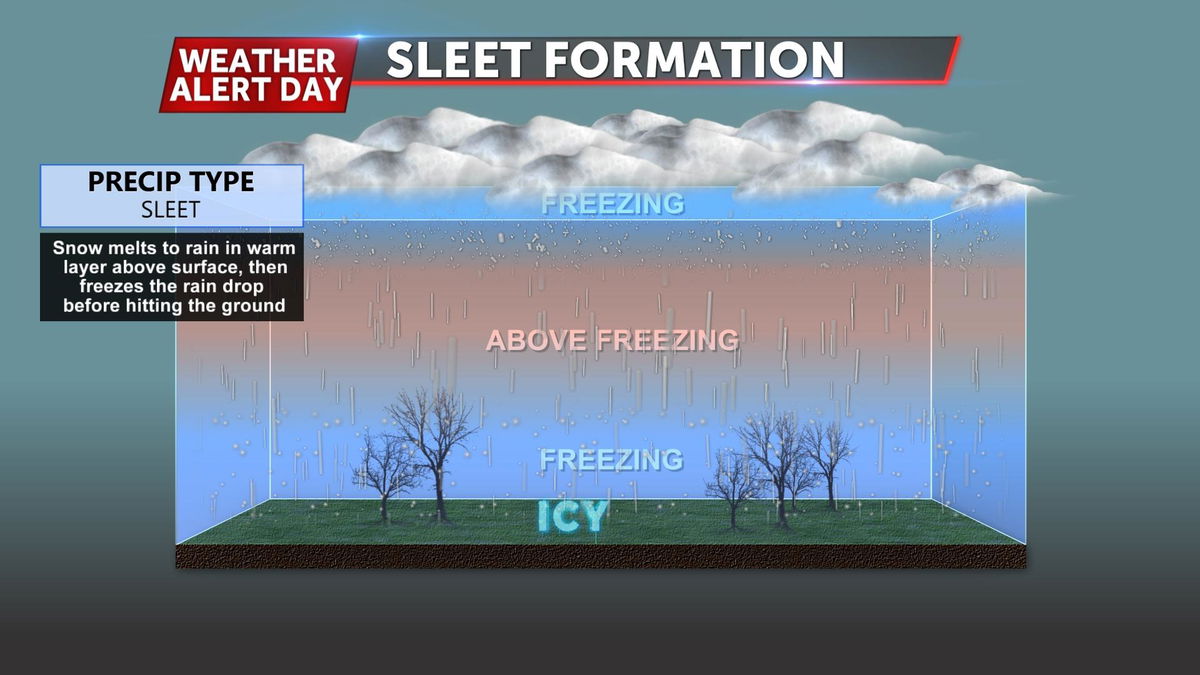What’s the difference between sleet and freezing rain?
When winter forecasts start to get messy, you'll often hear us meteorologists throwing out terms such as "freezing rain", "sleet", "snow", and "rain". While we use these terms a lot, it's not very often that we actually take the time to distinguish the differences between these forms of precipitation.

Rain and snow are arguably the easiest forms of precipitation to understand as the way they form is pretty straightforward. The frozen precipitation that comes from the clouds in the upper atmosphere will reach a significantly warmer layer of air before reaching the surface. This layer of warmth will melt the frozen particles into the raindrops that we see on the ground. For snow formation, there is no warmer layer for the snow to encounter between the cloud and the ground. This means that the snow will not melt and will reach the surface as snow.


Sleet and freezing rain both form in similar ways, but there is a small difference that will determine which form we will see on the ground. For these types of precipitation to form, there needs to be cold air aloft where the clouds are located, then a warm layer, and finally the second layer of cold air near the surface. This allows the snowfall from the upper clouds to melt in the warmer layer then refreeze before hitting the ground. The defining factor between freezing rain and sleet comes from how big the second layer of cold air is. Freezing rain comes when the cold layer is small. This doesn't allow the raindrops to fully freeze before hitting the ground. Sleet forms when there is enough time for the raindrops to freeze completely before hitting the ground.


Although sleet and freezing rain form in very similar ways, they can have very different impacts on our lives. For one, sleet is much less likely to stick to power lines. This greatly diminishes the possibility for power outages in winter weather events. Freezing rain on the other hand, sticks to power lines incredibly easily, increasing the probability of power issues.
